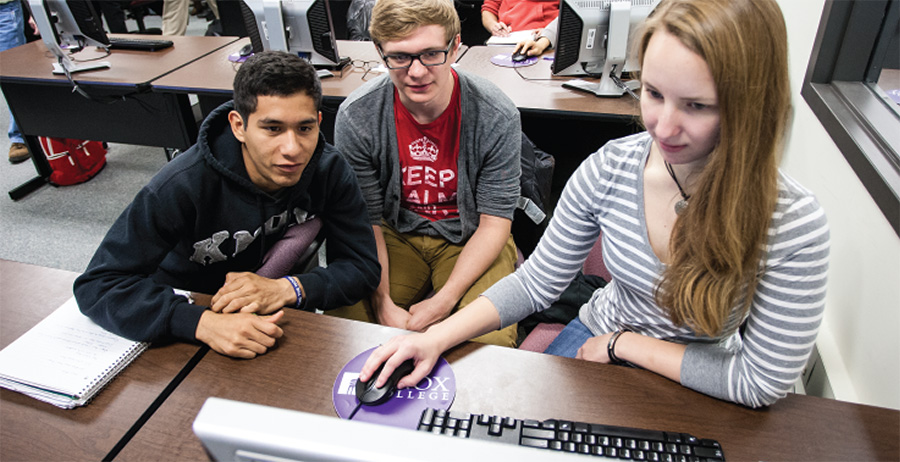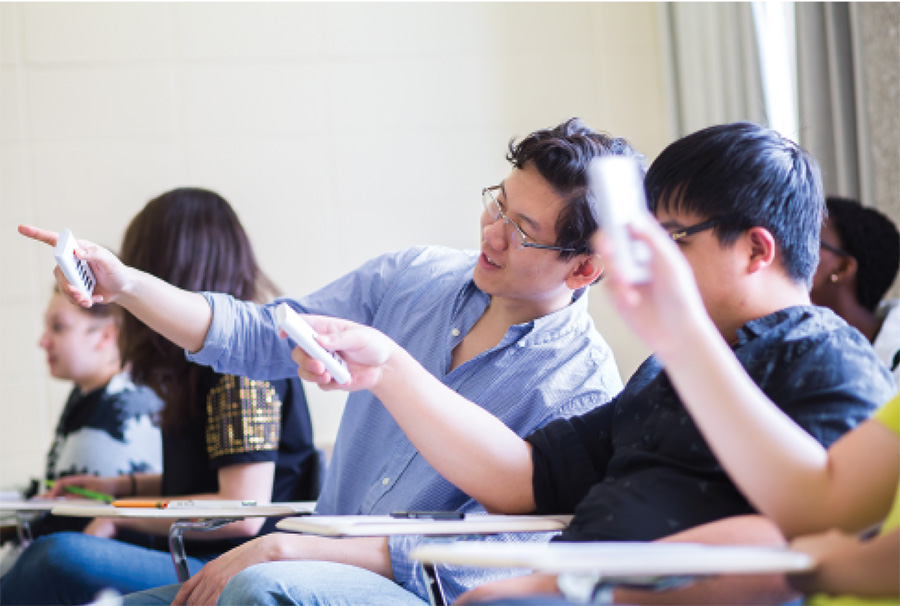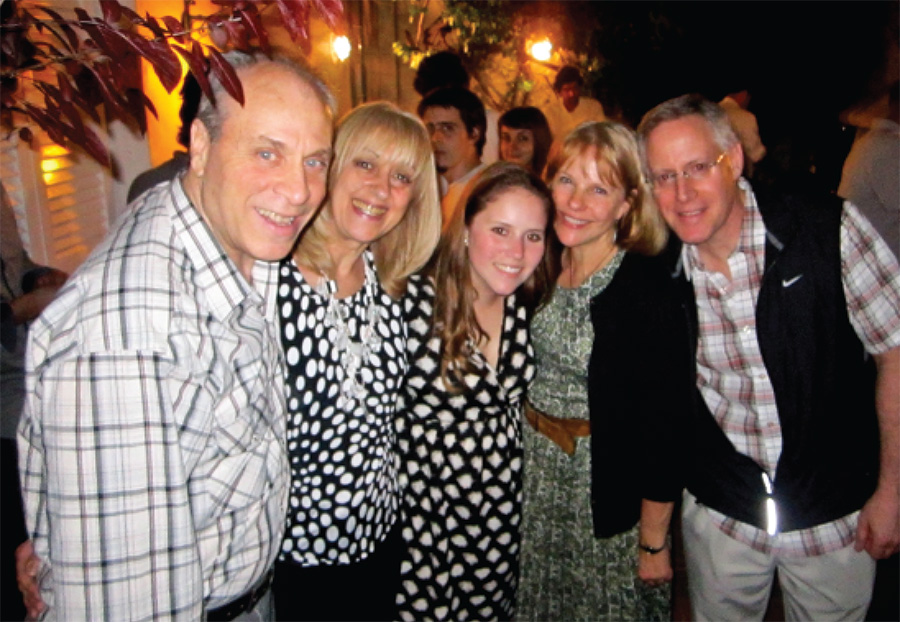


By Adriana Colindres
Technology is transforming classrooms in numerous ways, as faculty members develop and utilize innovative teaching methods that provide students with new ways to learn and new outlets for creativity.
The techniques vary. In some instances, faculty members have adopted a “flipped classroom” model which, essentially, turns the traditional lecture-style classroom on its head. Instead of spending the bulk of classroom time listening to an instructor, students start becoming familiar with course material on their own time, sometimes by watching the instructor’s prerecorded videos. This frees up precious class time for more complex tasks, such as solving problems and course material.
In another example of technology in the classroom, students who recently returned from study abroad and other off-campus programs produced three minute digital videos about their experiences. The project, which marked the culmination of a new course offering at Knox, allowed students to draw on existing skills in writing and critical thinking as they honed previously untapped skills in digital storytelling. Here is a look at three examples of the ways Knox faculty members and students are engaging in 21st-century teaching and learning.
Assistant Professor of Psychology Daniel Peterson implemented a flipped classroom during the 2013 fall term for Psychology 281: Research Methods and Statistics I. Students viewed the assigned video lectures, which Peterson created during the previous summer, on their own time. Class time was reserved mainly for addressing questions about the material, working through problem sets that previously would have been assigned as homework, and taking quizzes.
“With this format, if you don’t understand a particular concept, then you can just watch that part of the lecture again, over and over, to your heart’s content, as much as you want to,” Peterson said. “If something is making sense to you, you can just breeze through that particular part of the video.”
Peterson’s students appreciated having more control over the pace of their learning.
“I feel like I have a better understanding of the material because I am able to slow down when I need to,” said Chaz Benton ’15, a psychology major. “Along with taking notes, I can also always go back to the lecture and re-watch a section if I need to, which is a big tool for studying that I have never had before.”
Julie Wertheimer ’16, a psychology major, had a similar view. “If I find myself losing focus and getting distracted, I can pause the video and come back a little later,” she said. “I also like that I don’t have to do any problems on my own. Peterson has example problems during the lecture, where he asks us to pause the video and work the problem, but then he explains how to solve the problem immediately afterward. Then we work more problems in class, so if I have any questions I can ask him right away.”
After the fall term course ended, Peterson analyzed whether the flipped classroom technique helped students learn the material better than previous students had learned the same material in a traditional lecture-style presentation. According to his analysis, it clearly did. Here are some highlights of what he found:

Above: Students collaborate on problem sets in Daniel Peterson's psychology class, Research Methods and Statistics I.
Jaime Spacco, associate professor of computer science, offered another version of a “flipped classroom” in Computer Science 262: Information Management. Spacco’s students, like Peterson’s, watched assigned videos outside of class time. Once in the classroom, Spacco gauged how well they understood the material by asking them what he calls “clicker questions,” or multiplechoice questions projected on a screen. Students, equipped with hand-held electronic devices, voted anonymously on each question. The student responses helped Spacco identify which topics warranted extra attention.
“If there’s one goal of a flipped classroom, it’s to change the moment of a student’s first contact with the material— to before they get to class,” said Spacco, who used a methodology called “peer instruction.”
“The idea is you have students read ahead of time and answer a couple of review questions,” he said. “When they get to class, they do the clicker questions and they do them in a very specific way. You have them vote as individuals, and then you have a group discussion phase where they discuss the question in groups of two or three or sometimes four. Then you have them vote again, based on the consensus they reached in their group.”
What ends up happening, he says, is that students use the group discussion phase to explain their reasoning behind a particular answer, to ask questions, and to help each other understand key concepts. “If you have questions, you have to articulate that” in the small group, he said. “You’re forced to confront any confusion immediately. That’s incredibly beneficial.”
In anonymous course evaluations, students who referred to the flipped classroom provided positive feedback about the experience.
“The flipped classroom teaching method for this class worked very well,” one student wrote. “Once lectures are available for every class, this will be an ideal way to learn.”
“(Spacco’s) flipped classroom methodology was very interesting, and I think I learned a lot from it,” another student wrote. “He ensured that during class time, he could answer any questions that the students had.”
Student Ryan Frank ’14 described Spacco’s flipped classroom as working “rather well.” “It really helped because it would show me what I didn’t know or was shaky on. Flipped classes give immediate feedback so even struggling students can keep up better,” said Frank, an economics major with a minor in computer science. “A flipped classroom shifts the focus away from students who are naturally talented at the subject or (at) learning from lectures, and more towards students that put in hard work. Everyone can do that.”

Above: Electronic devices, or clickers, allow students in Jaime Spacco's Information Management class to show how well they understand the subject matter.
Robin Ragan, associate professor of modern languages (Spanish), taught the inaugural Digital Storytelling class during the 2014 winter term to help students reflect on recent experiences in study abroad and other immersive off-campus programs.
Students in the interdisciplinary class brainstormed ideas for the self-narrated videos and revised their work in peer review groups. In addition to working with Ragan, students also received input from Elizabeth Carlin Metz, Smith V. Brand Endowed Chair in Theatre Arts, and Chad Simpson, associate professor of English, on how to polish their editing and vocal presentation skills.
Ragan, who also directs the Eleanor Stellyes Center for Global Studies, said she was inspired to develop the course at Knox after attending two workshops about multi-media storytelling and after seeing firsthand how students often struggled when they returned from studying abroad.
"I could see that the very students that had studied abroad with me when I directed programs in Barcelona or Buenos Aires were returning to feelings of loss and disorientation," she said. "I also observed that they needed help to articulate what the experience meant to them. They are often faced with the question, ‘How was it?' and don't get beyond ‘It was great!'"
Students in the class, including Anna Roser '14, said it helped them more fully process their study abroad experiences. "One of the things I really liked about it was the fact that there were so many people that were curious about stories from being abroad," said Roser, a Spanish major from Boise, Idaho, who studied abroad in Spain and Argentina.
"One of the hard parts about coming back is that people ask me how it was, and expect a one-second answer. This was learning how to tell a vibrant, short story in three-four minutes so you could actually give people a piece of what you were experiencing, what your life was like, without boring them."
Ragan said the class, which she hopes to offer again in the future, "is a great opportunity to produce a reflective, compelling, visual piece that is then easily shared with others." The course also represents part of Knox's commitment to the Institute of International Education's nationwide initiative to dramatically increase the number of U.S. students who study abroad.
"As with any transformative experience," she added, "reflection is an essential component to making meaning."

Above: In Robin Ragan's Digital Storytelling class, Bekah Lauer '14, center, created a short video about her study abroad experience in Argentina.
1968
A.B.L.E. (Allied Blacks for Liberty & Equality) was founded.
Open to students of all races, uniting them around common concerns regarding the Black experience